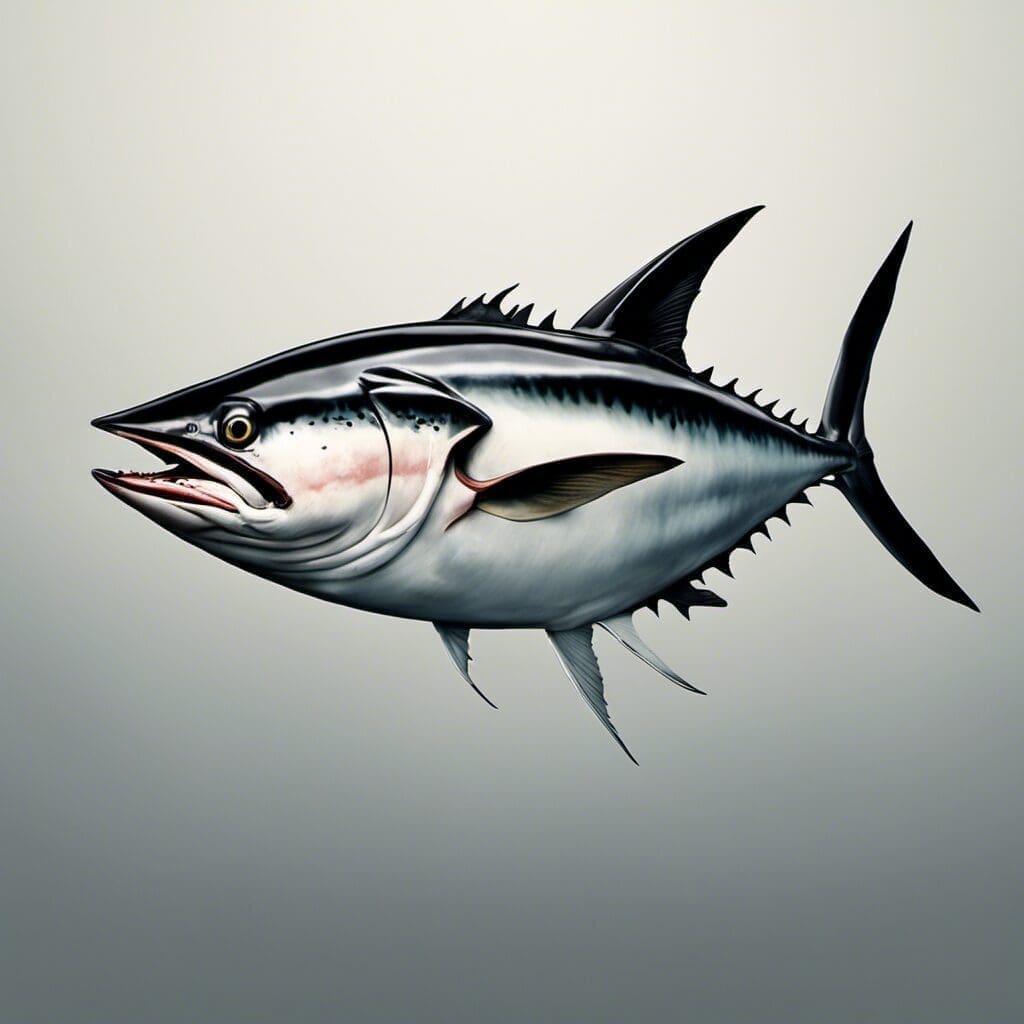Introduction
The Dogtooth Tuna, scientifically known as Gymnosarda unicolor, is a species belonging to the Scombridae family. This species of fish is characterized by its large size, sharp teeth, and unique behavior.
Conservation Status
The Dogtooth Tuna boasts a robust population, securing it a classification as “Least Concern” by marine conservation organizations. Despite being a prime target for sport fishing, there are currently no major conservation efforts in place specific to this species. However, general campaigns aimed at promoting sustainable fishing practices indirectly benefit this species.
Statistics
| Statistical Attribute | Average | Range |
|---|---|---|
| Length | 75 cm | 50 – 100 cm |
| Weight | 100 kg | 50 – 200 kg |
| Lifespan | 12 years | 10 – 15 years |
Distribution
Dogtooth Tuna are widespread in the tropical waters of the Indian and Pacific Oceans. They are known to migrate towards the equator during colder months and return to the cooler region during warmer months.
Habitats
Able to thrive in a variety of water types, Dogtooth Tuna are mostly spotted in deep, off-shore tropical waters. They prefer water temperatures between 70°F and 85°F and depths ranging from 30 to 200 meters.
When and Where to See
These large game fishes are best spotted during the warmer season. Predominantly an apex predator, they can be seen mostly during the dawn and dusk hours when they are most active.
Best Fishing Locations
- Great Barrier Reef, Australia
- Maldives
- Sumba, Indonesia
- Mauritius
- Cocos Island, Costa Rica
- Ogasawara Islands, Japan
- Andaman and Nicobar Islands, India
- Christmas Island, Australia
- Papua New Guinea
- Seychelles
These locations are renowned for Dogtooth Tuna but they can be found on most tropical coasts. Look for areas with higher ocean depths and abundant small fishes.
How to Catch
Dogtooth Tuna’s preferred prey includes small fishes and squids. Hence, they are best caught using live or dead bait such as mullet or mackerel, or lures resembling their prey. Techniques such as trolling and spearfishing are commonly used. Best times to catch them are dawn and dusk.
Identification Guide
Characterized by its long, slender body, Dogtooth Tuna has a dark blue-black color on top with a silvery white underside. It’s teeth are sharp and canine-like, distinctive from most other tunas.
Culinary
Dogtooth Tuna is quite popular in sushi due to its rich and robust flavor. High in protein, omega-3 fatty acids and vitamins, it’s a healthy choice for many. Try it in Marinated Grilled Tuna Steak for a delightful meal.
Additional Information
Known for their high speed and power, Dogtooth Tuna are apex predators, mainly preying on smaller fishes and squids. Their only major predators are larger shark species. An interesting aspect of Dogtooth Tuna is their fight behavior when caught, often resulting in line breaks.
Historical and Cultural Significance
In several Pacific Island cultures, catching a Dogtooth Tuna is seen as a sign of valor due to their strength and size. They also feature prominently in many traditional ceremonies and festivals.
References and Further Reading
- Florida Museum – Dogtooth Tuna
- Fishbase – Dogtooth Tuna
- NOAA Fisheries – Pacific Bluefin Tuna

